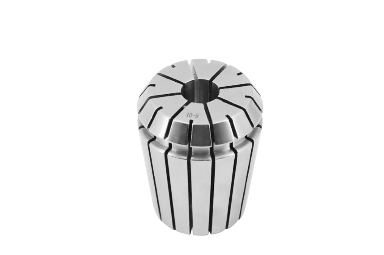What Is a Collet Used for?
A collet is a specialized tool or device used in various industries and applications, primarily in machining and woodworking. It is designed to hold and secure a workpiece or tool in place during operations such as drilling, milling, turning, and grinding. The collet itself is a cylindrical sleeve with an inner bore that tapers down to a smaller diameter, typically with multiple slots or splits along its length. In this response, we will explore the uses and applications of collets in more detail.
Workholding in Machining: One of the primary uses of collets is in workholding during machining processes. A collet is inserted into a collet chuck or spindle of a machine, such as a lathe or milling machine, to securely hold a workpiece or tool. The collet is tightened, compressing its inner diameter around the workpiece or tool, creating a strong and accurate grip. This allows for precise machining operations without slippage or movement of the workpiece or tool.
Tool Clamping: Collets are also widely used for clamping and securing cutting tools in machining operations. They are commonly used in CNC (Computer Numerical Control) machines, where precision and repeatability are essential. The collet is inserted into a tool holder or collet chuck, and the cutting tool, such as a drill bit or end mill, is inserted into the collet. As the collet is tightened, it grips the tool tightly, ensuring proper alignment and stability during cutting operations. This allows for efficient and accurate machining while minimizing tool runout or deflection.

Precision and Accuracy: Collets are known for their excellent concentricity and runout characteristics, making them ideal for applications that require high precision and accuracy. The tapered design of the collet ensures that the workpiece or tool is held concentrically within the collet, minimizing any wobbling or misalignment. This is crucial for achieving precise and repeatable machining results, especially in applications such as micro-drilling, fine milling, and high-speed machining.
Versatility: Collets offer versatility in terms of the range of workpiece or tool diameters they can accommodate. Different sizes of collets are available, allowing for a wide range of workpiece or tool sizes to be securely held. Additionally, some collet designs feature adjustable or interchangeable collet inserts, which further expand their versatility and adaptability to various diameters. This flexibility makes collets suitable for both small-scale and large-scale machining operations.
Quick Tool Changes: Collets facilitate quick and efficient tool changes, which is especially beneficial in production environments where frequent tool changes are required. Once a collet is properly set up and tightened, tool changes can be accomplished swiftly by releasing the collet and inserting a new tool. This reduces downtime and improves productivity, allowing for uninterrupted machining operations.
Reduced Tool Vibration and Improved Surface Finish: Collets play a significant role in minimizing tool vibration during machining. The secure grip provided by the collet reduces tool runout and deflection, resulting in smoother cutting operations. This reduction in vibration helps to improve the surface finish of the machined parts, minimizing surface roughness and achieving higher-quality results. It is particularly important when working with delicate materials or when precision surface finishes are required.
Safety: Collets contribute to the safety of machining operations by securely holding workpieces and tools. The strong grip provided by the collet reduces the risk of workpiece or tool ejection during machining, ensuring operator safety. Additionally, the precise and stable clamping offered by collets helps to prevent accidents caused by workpiece or tool slippage, enhancing overall workplace safety.
If you need more information or support on types of collets, please don’t hesitate to contact us at info@ruihantools.com, we will try our best to support you.

